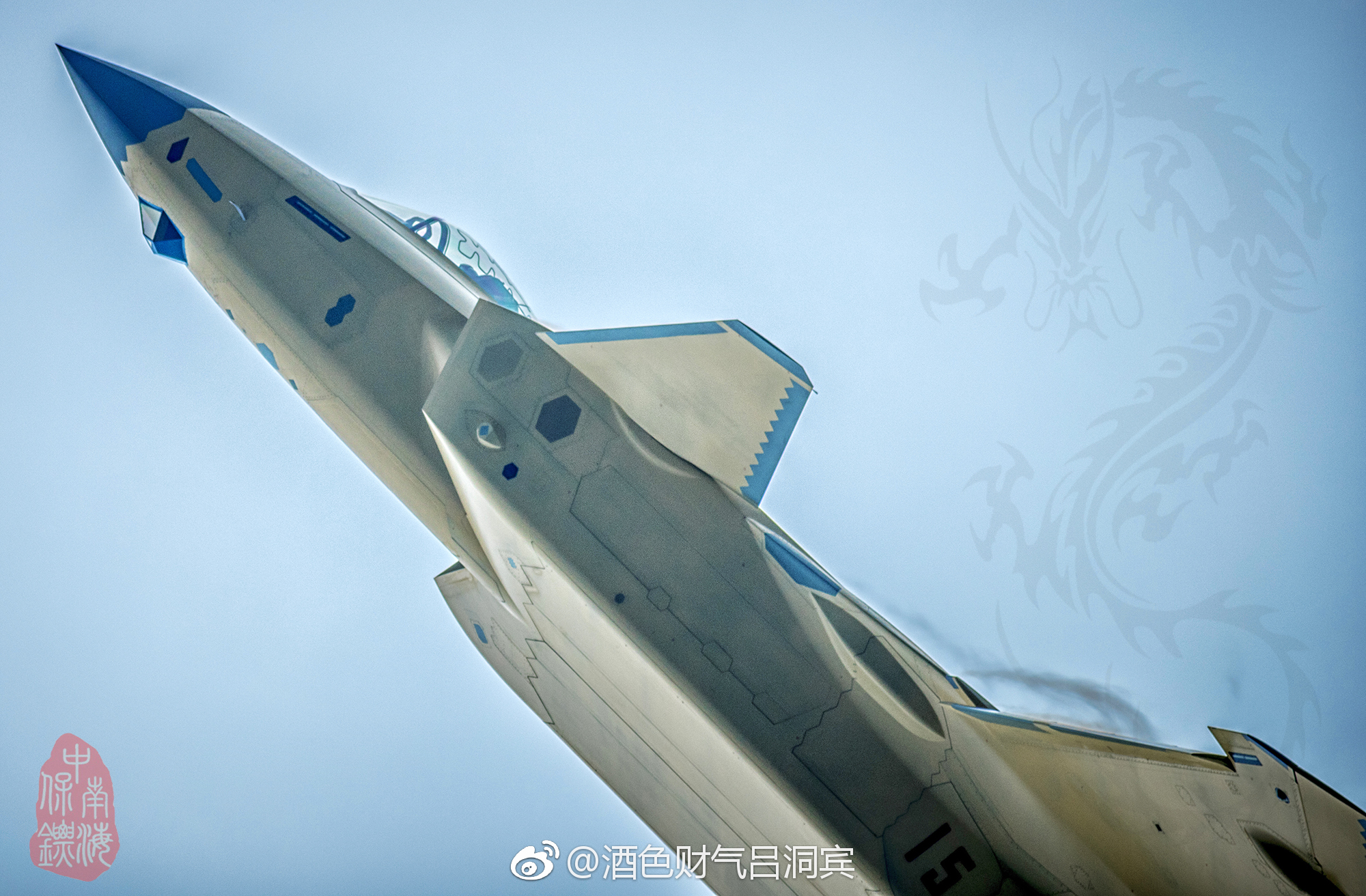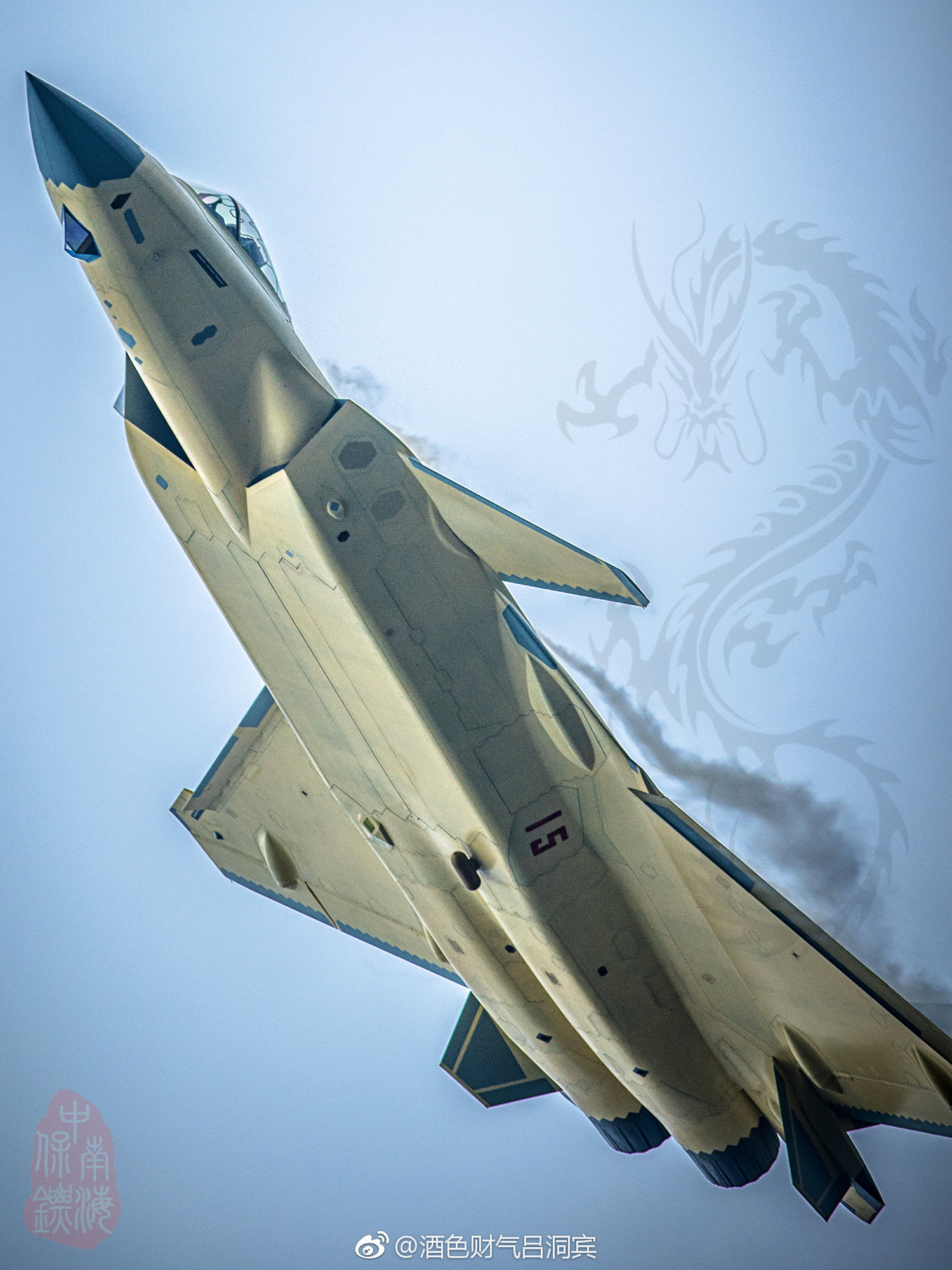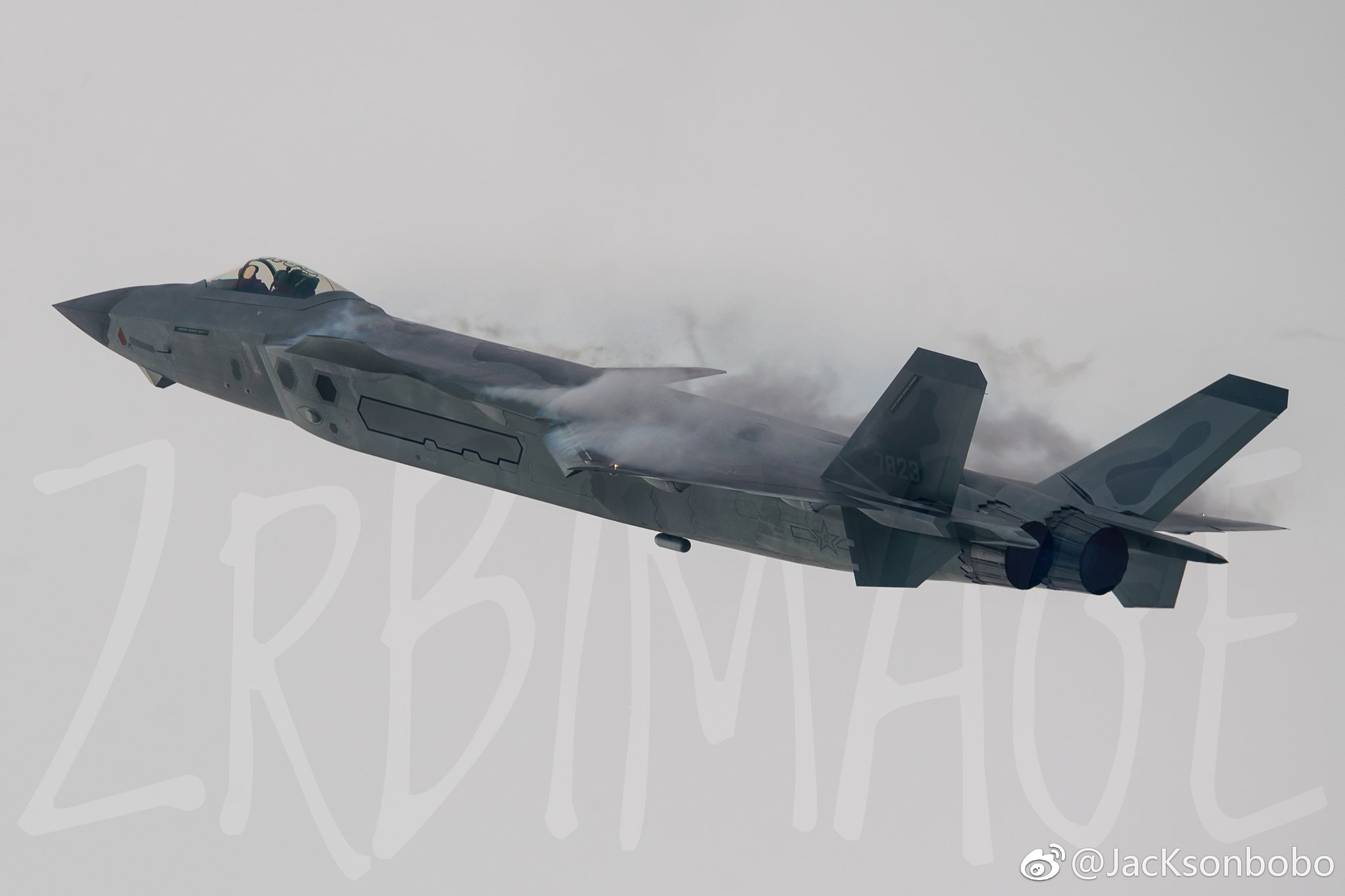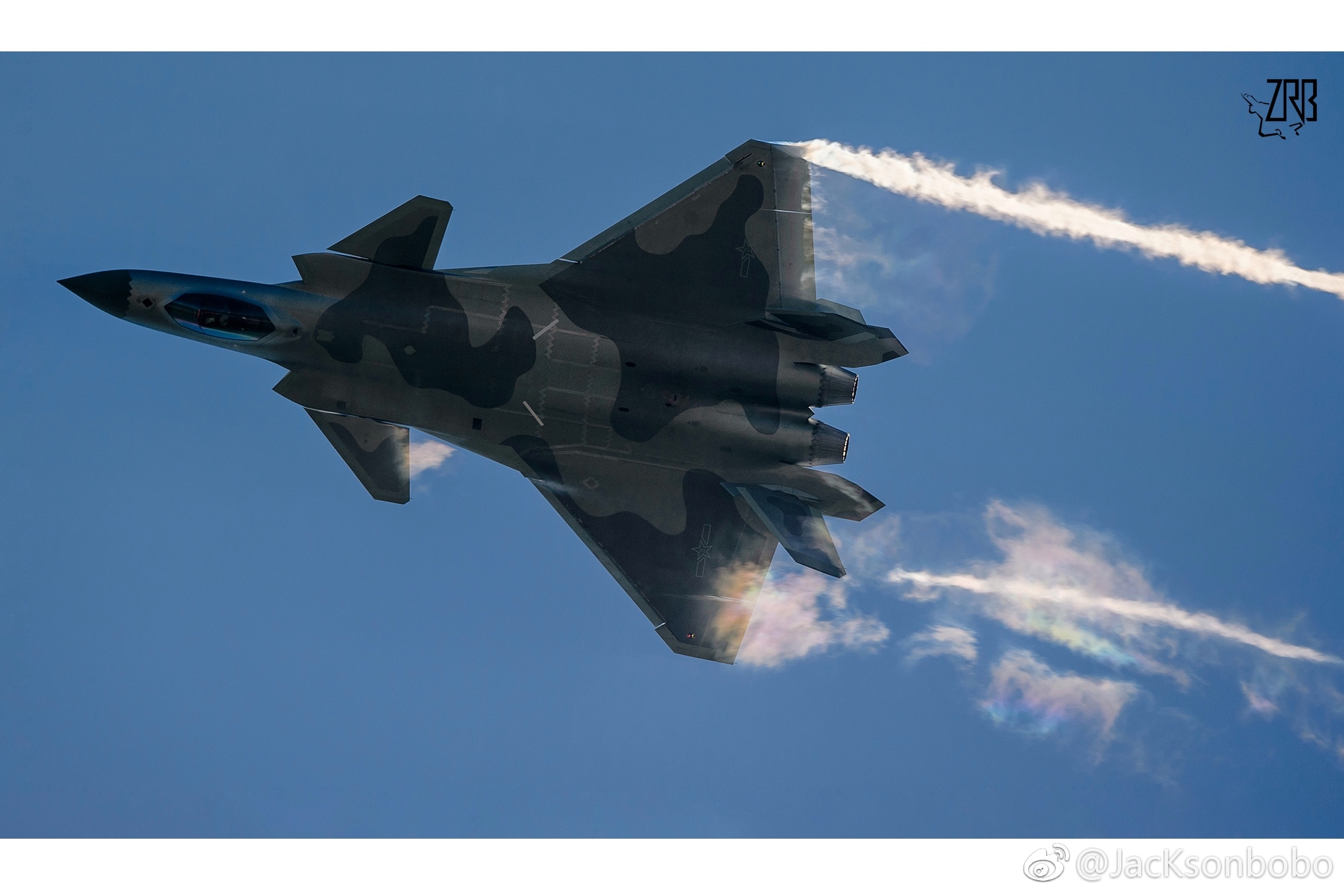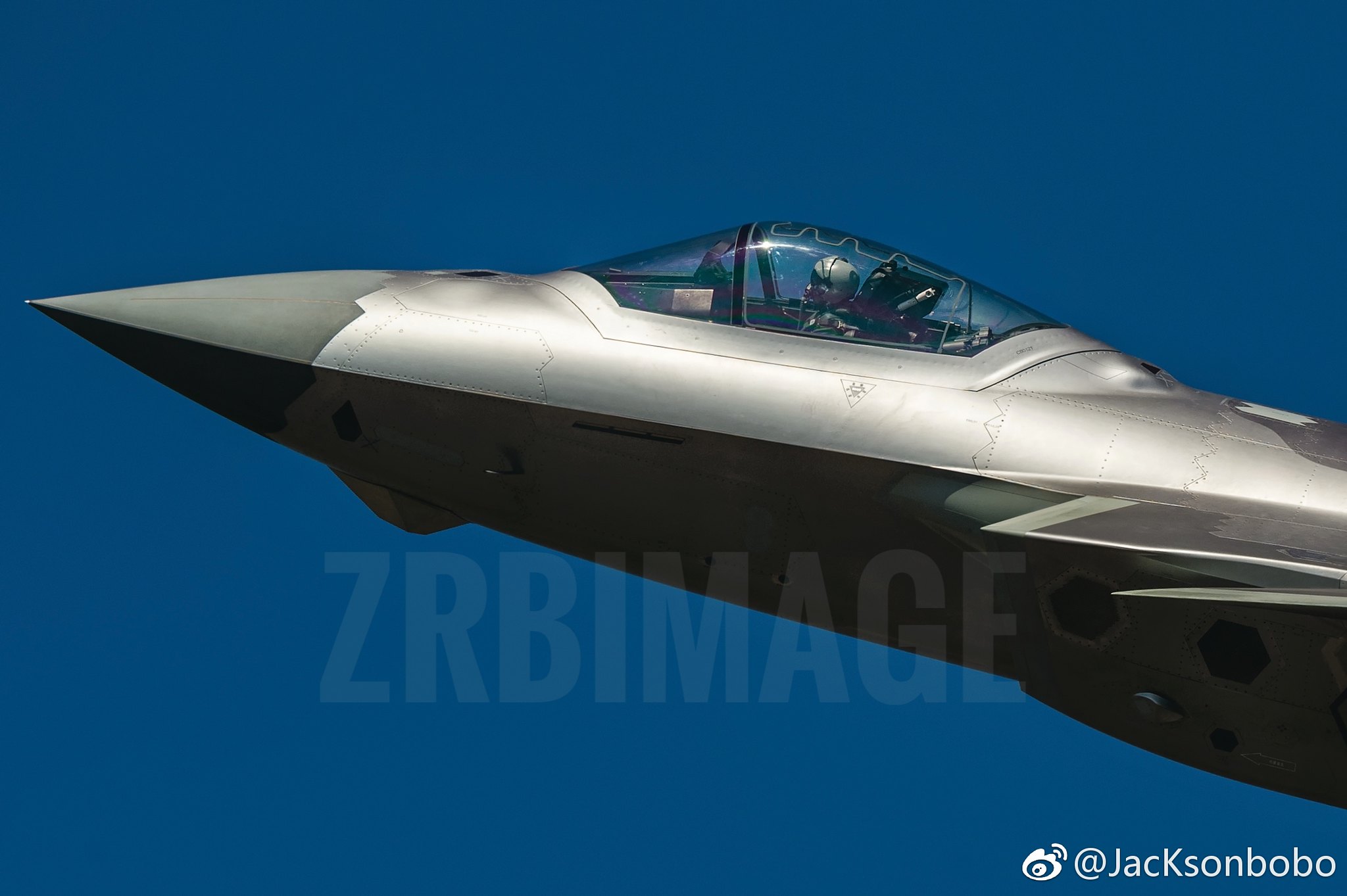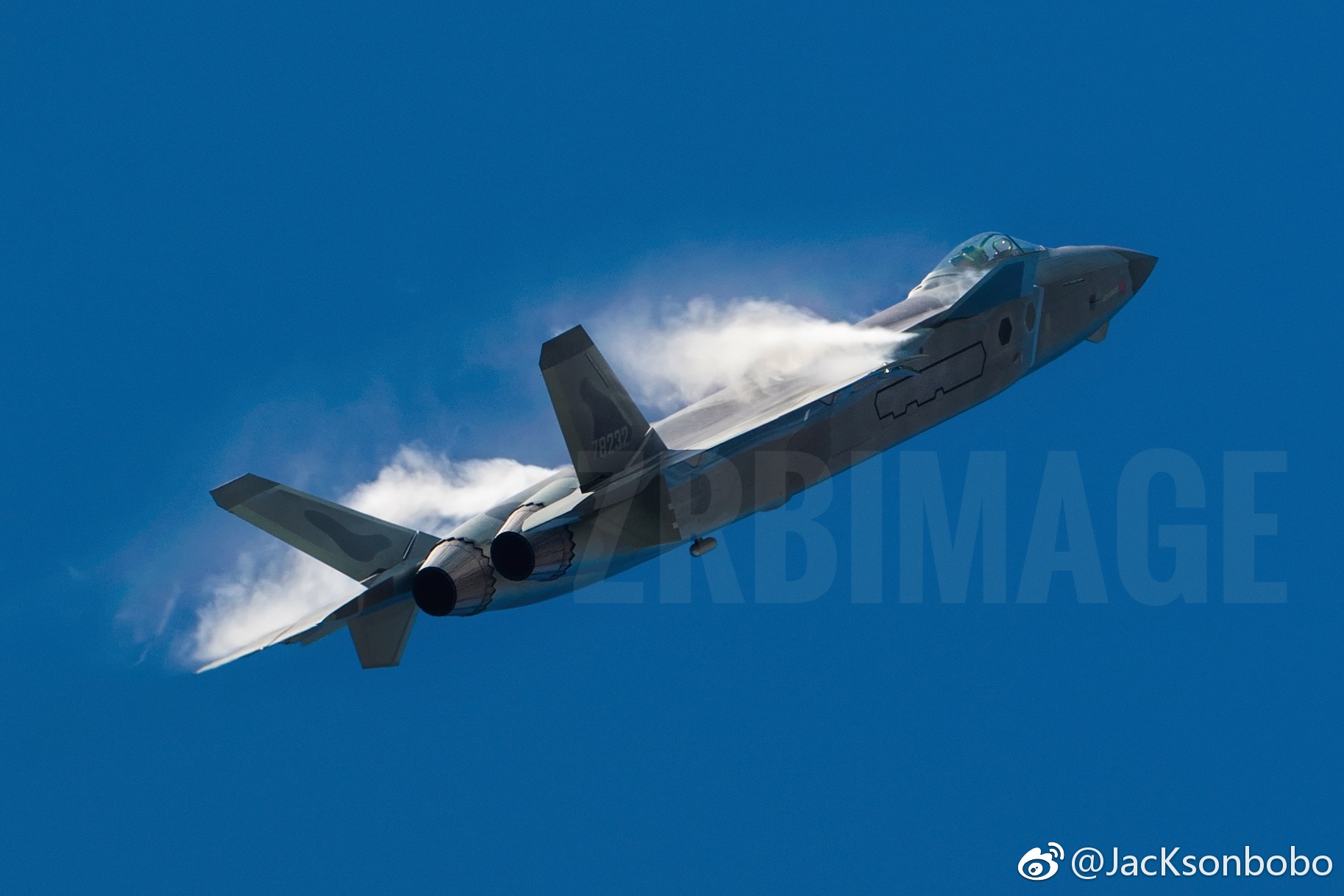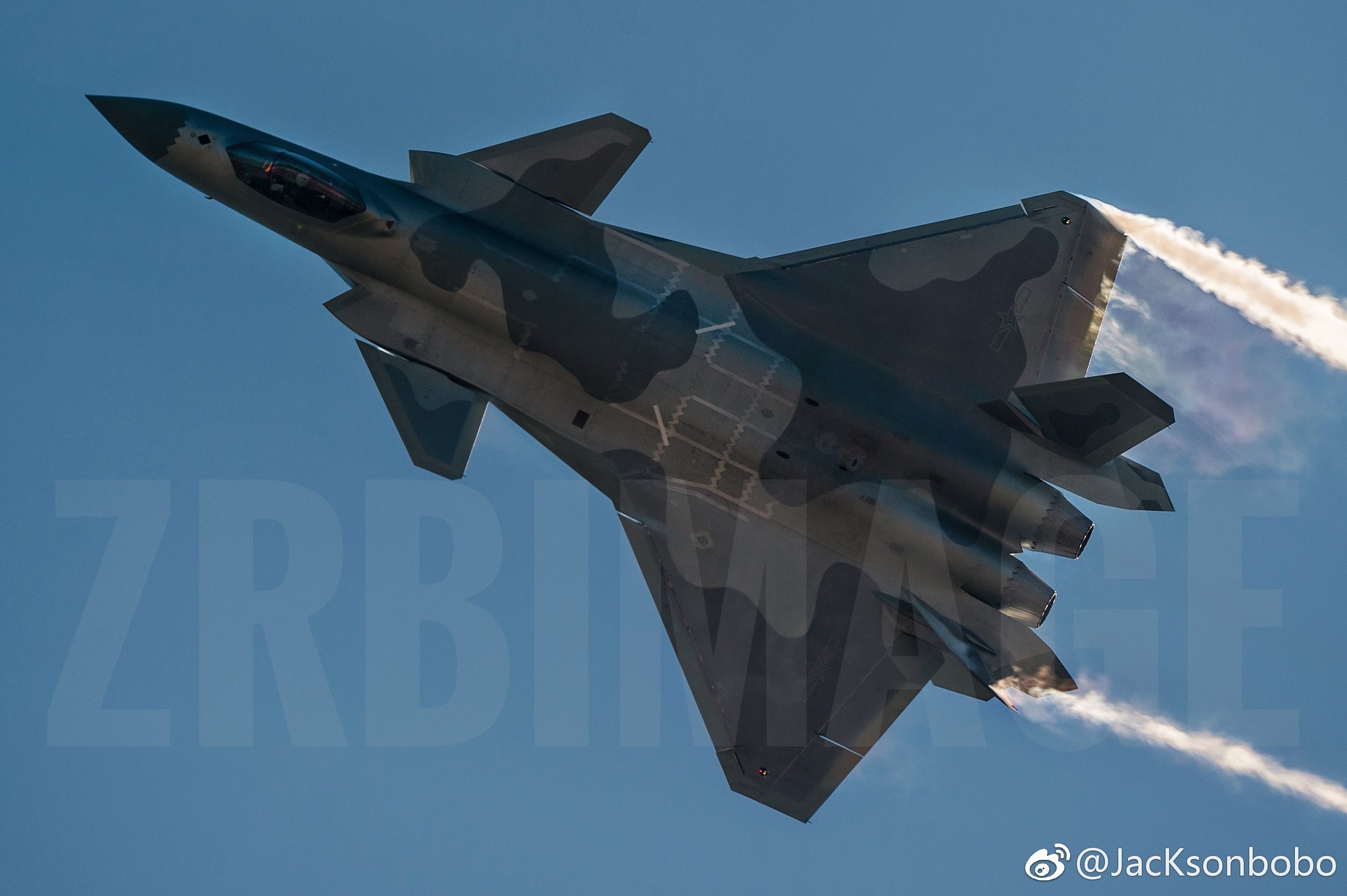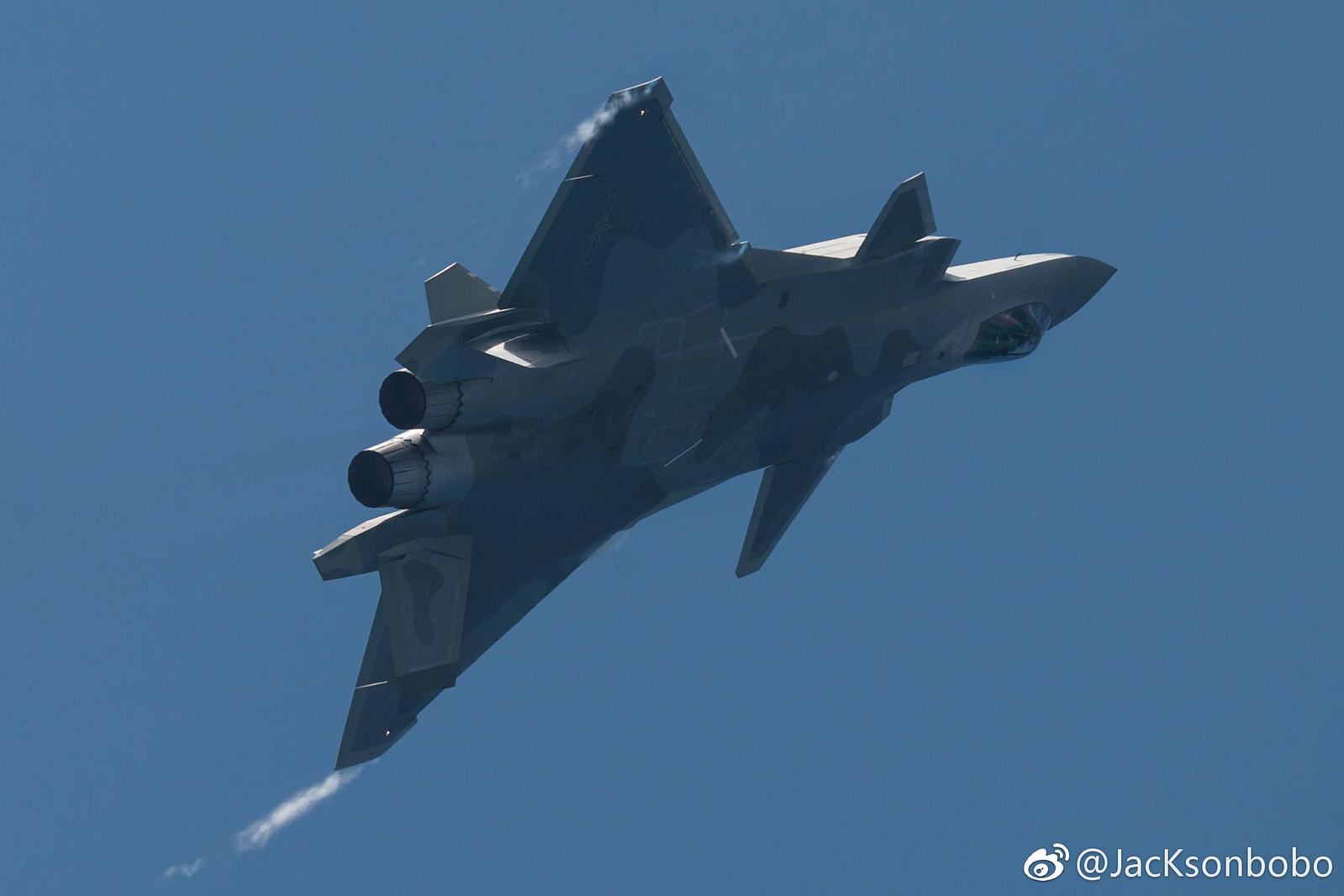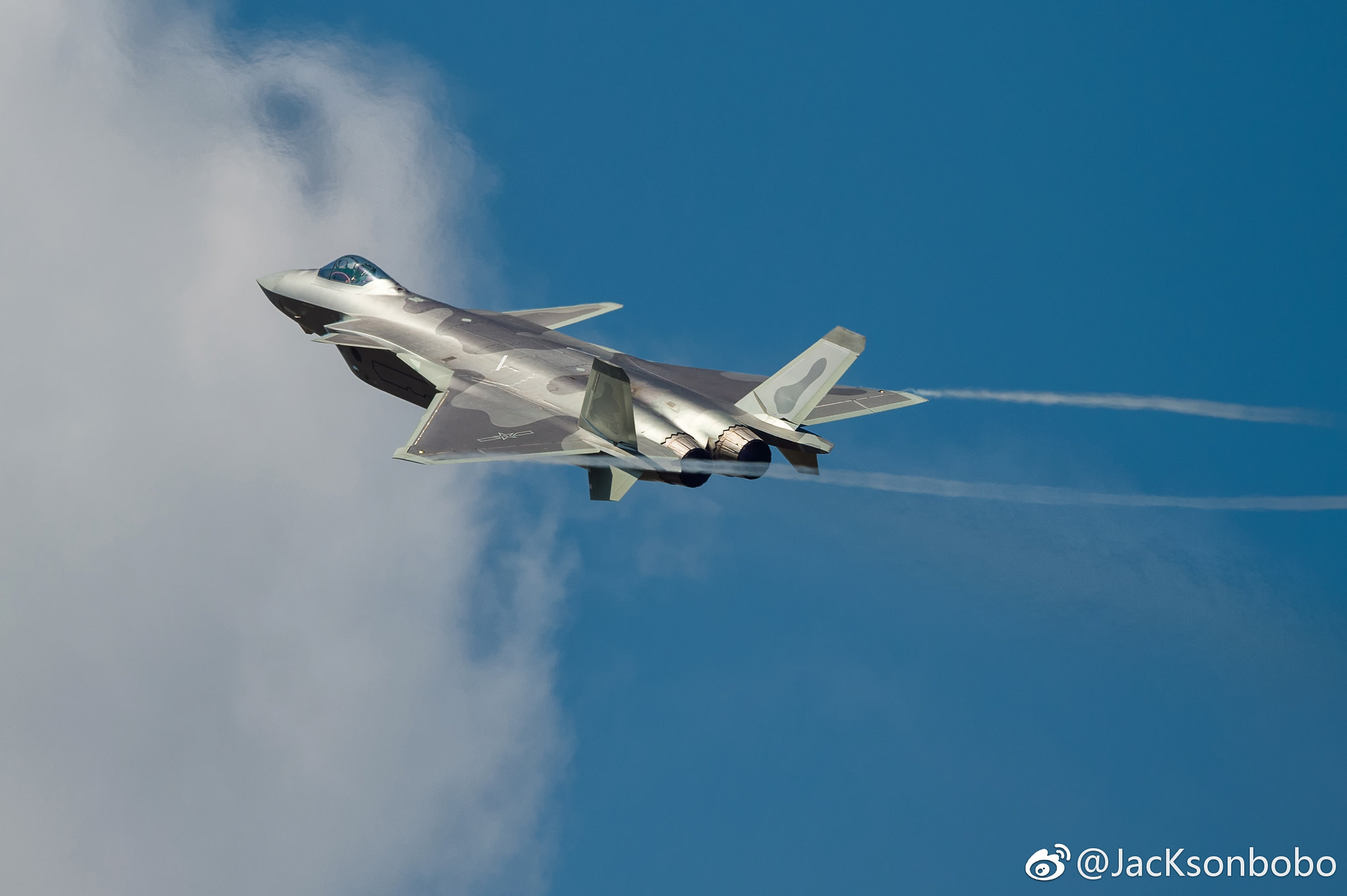I know. I just say, there is no contradiction: this is an intended feature, a very old one at that.You get more range with a tight beam than with wide beam.
The Chinese are not passing judgement on Russian fighter doctrine, just unimpressed their advertised max range could only be achieve thus.
You are using an out of date browser. It may not display this or other websites correctly.
You should upgrade or use an alternative browser.
You should upgrade or use an alternative browser.
J-20 5th Gen Fighter Thread VI
- Thread starter siegecrossbow
- Start date
- Status
- Not open for further replies.
Hyperwarp
Captain
IIRC the Irbis-E max range is at full power with a rather slow scanning rate (about 400 km for a 3m^2 target). I remember comments sometime back at AFM forum that if the Su-35 used its radar like that, passive sensors of the F-22 and F-35 will light-up handsomely. One analog given was like shining a lighthouse beam. Both
Idea is, this mode is used under external guidance(say, ground-controlled intercept environment or any other source), i.e. when fighter already knows where to search and only needs to get weapon-quality data to engage.IIRC the Irbis-E max range is at full power with a rather slow scanning rate (about 400 km for a 3m^2 target). I remember comments sometime back at AFM forum that if the Su-35 used its radar like that, passive sensors of the F-22 and F-35 will light-up handsomely. One analog given was like shining a lighthouse beam. Both
Against 4th generation targets, it allows to bluntly outrange them in detection and engagement planning.
Against 5th gens - engage(ambush) targets unreachable otherwise, getting radar return at reasonable ranges through simple power output. Not the worst possible situation for the 4th gen fighter in an unfavourable match.
Hyperwarp
Captain
I agree that claims according to which there are no operational AESAs on PLAAF fighters (notably J-10C and J-16) don't stand up to scrutiny, but I wouldn't necessarily dismiss reports of a certain level of Russian input. You don't need to have a fighter AESA (let alone a lower-band naval AESA, the manufacturing requirements for which are significantly different*) in production to know how to develop various aspects of one. Think cooling system or ECCM signal processing algorithms. Even design of the MMICs - some of the most successful chip design companies don't have their own manufacturing capability at all (ARM, for one), they merely license their design to the customer who then commissions a dedicated foundry like TSMC to mass-produce it. Consider also the substantial influence of Russian émigrés on Intel's Pentium processor architecture - industry in Russia had no hope of actually executing such a design, yet they knew just fine what a world-beating CPU *should* be like.
* Even so, the first Admiral Gorshkov frigate with its AESA radar was transferred to the Northern Fleet and formally commissioned last year, the second is likely to follow soon. Better yet, I suspect a number of Russian fixed-site ABM radars (notably the Don-2N battle management radar outside Moscow) have been AESAs for decades. So is (for a non-Russian example) EriEye which was introduced in the mid-1990s.
Not many deny the Russian contribution. Some scientists from SibNIA, TsAGI and other research and tech institutes have lived in China since the '90s. I believe our very own flateric has some Chinese connection. But the dismissive tone of Piotr Butowski's article is strange.
Jura The idiot
General
now noticed the tweet
D'après une vidéo postée par un internaute chinois, 7 appareils J-20 étaient stationnés dans un endroit non identifié dans des hangars à l'air libre.
Translated from French by
According to a video posted by a Chinese Internet user, 7 J-20 aircraft were stationed in an unidentified location in open air hangars.
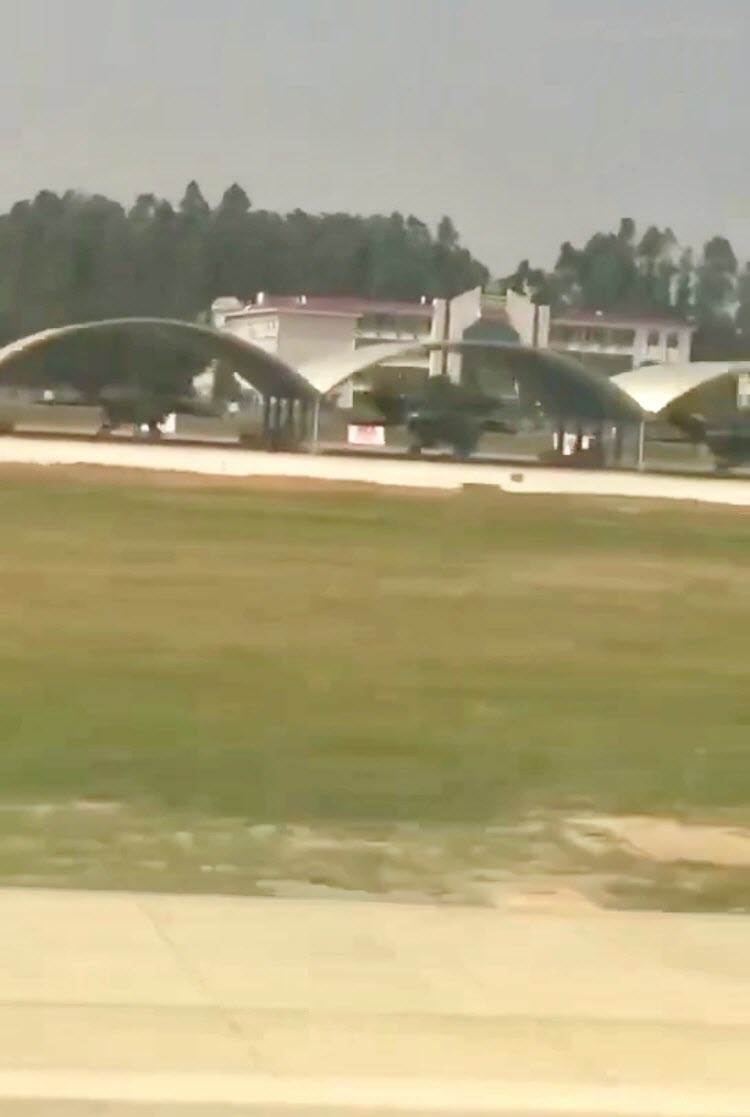
D'après une vidéo postée par un internaute chinois, 7 appareils J-20 étaient stationnés dans un endroit non identifié dans des hangars à l'air libre.
Translated from French by
According to a video posted by a Chinese Internet user, 7 J-20 aircraft were stationed in an unidentified location in open air hangars.

Jura The idiot
General
the picture:
15... mais de quoi ?
Translated from French by
15... but of what?
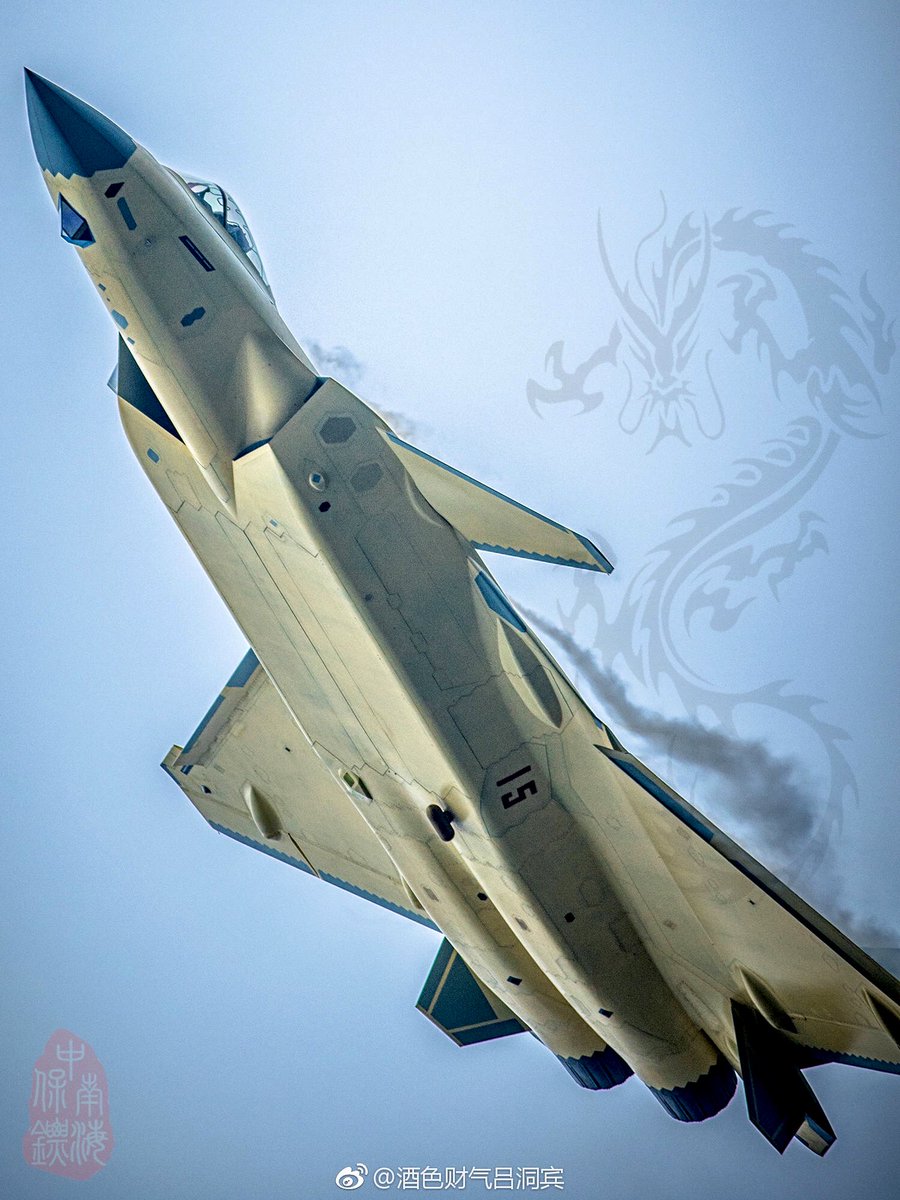
in the tweet
15... mais de quoi ?
Translated from French by
15... but of what?

the picture:
in the tweet
15... mais de quoi ?
Translated from French by
15... but of what?

Might be the 15th production model.
- Status
- Not open for further replies.

